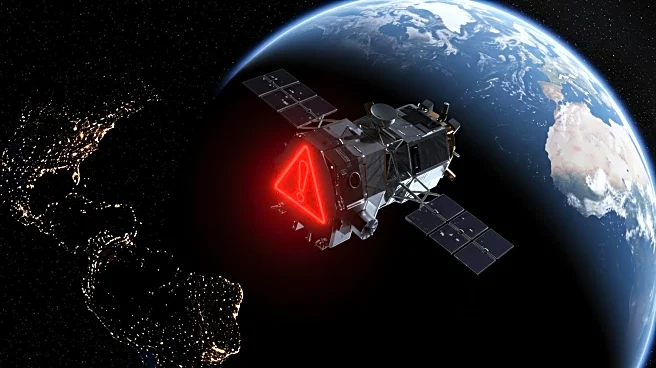What's Happening?
NASA has confirmed the presence of a significant anomaly in Earth's magnetic field, known as the South Atlantic Anomaly (SAA), which spans across South America and the South Atlantic Ocean. This region is characterized by a dip in magnetic intensity, posing challenges for satellites and spacecraft due to increased exposure to charged particles. The anomaly is linked to deep-Earth structures, including the geodynamo and the African Large Low Shear Velocity Province, which influence the magnetic field at the surface. The SAA is evolving, drifting west/northwest, and splitting into two lobes, complicating forecasting and risk mapping for spacecraft routes.
Why It's Important?
The South Atlantic Anomaly represents a critical concern for space technology, as it increases the risk of instrument glitches and hardware issues for satellites passing through the region. Operators often need to power down non-essential systems to mitigate these risks. The anomaly's shifting nature requires constant updates to global models, impacting mission planning and satellite operations. While the SAA is not indicative of an imminent geomagnetic pole reversal, its behavior necessitates careful monitoring and adaptation by space agencies to ensure the safety and functionality of space missions.
What's Next?
Space agencies are expected to continue integrating multi-satellite data with core-field simulations to update global models like the International Geomagnetic Reference Field. These updates are crucial for maintaining accurate forecasts and adapting spacecraft routes to avoid the anomaly's danger zones. As the SAA continues to evolve, mission designers will need to incorporate its constraints into observation schedules and instrument duty cycles well in advance to minimize operational disruptions.
Beyond the Headlines
The South Atlantic Anomaly highlights the complex interactions between Earth's core and mantle structures and their impact on the magnetic field. Understanding these interactions is essential for predicting long-term changes in Earth's magnetic environment. The anomaly also underscores the importance of international collaboration in geomagnetic research, as agencies worldwide contribute to monitoring and modeling efforts to safeguard space technology.











